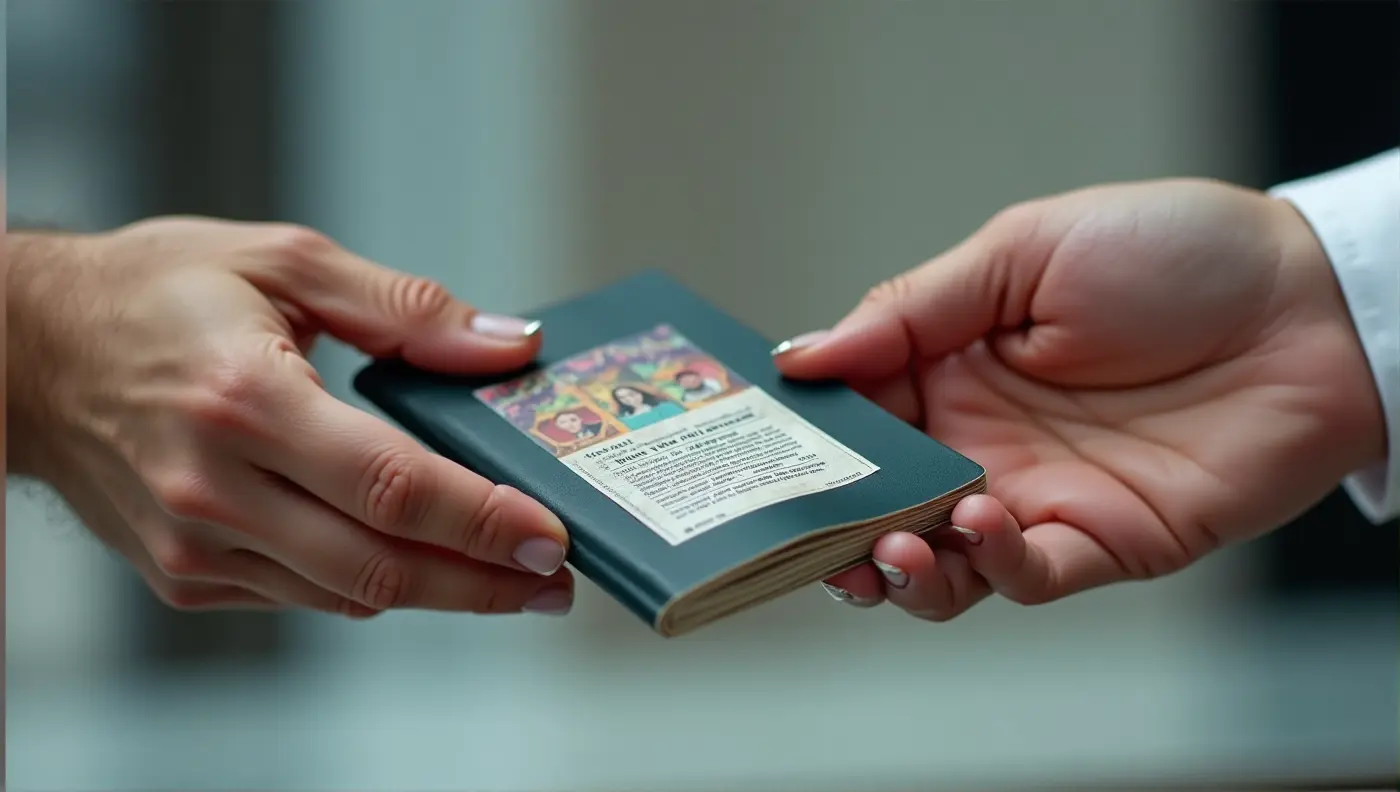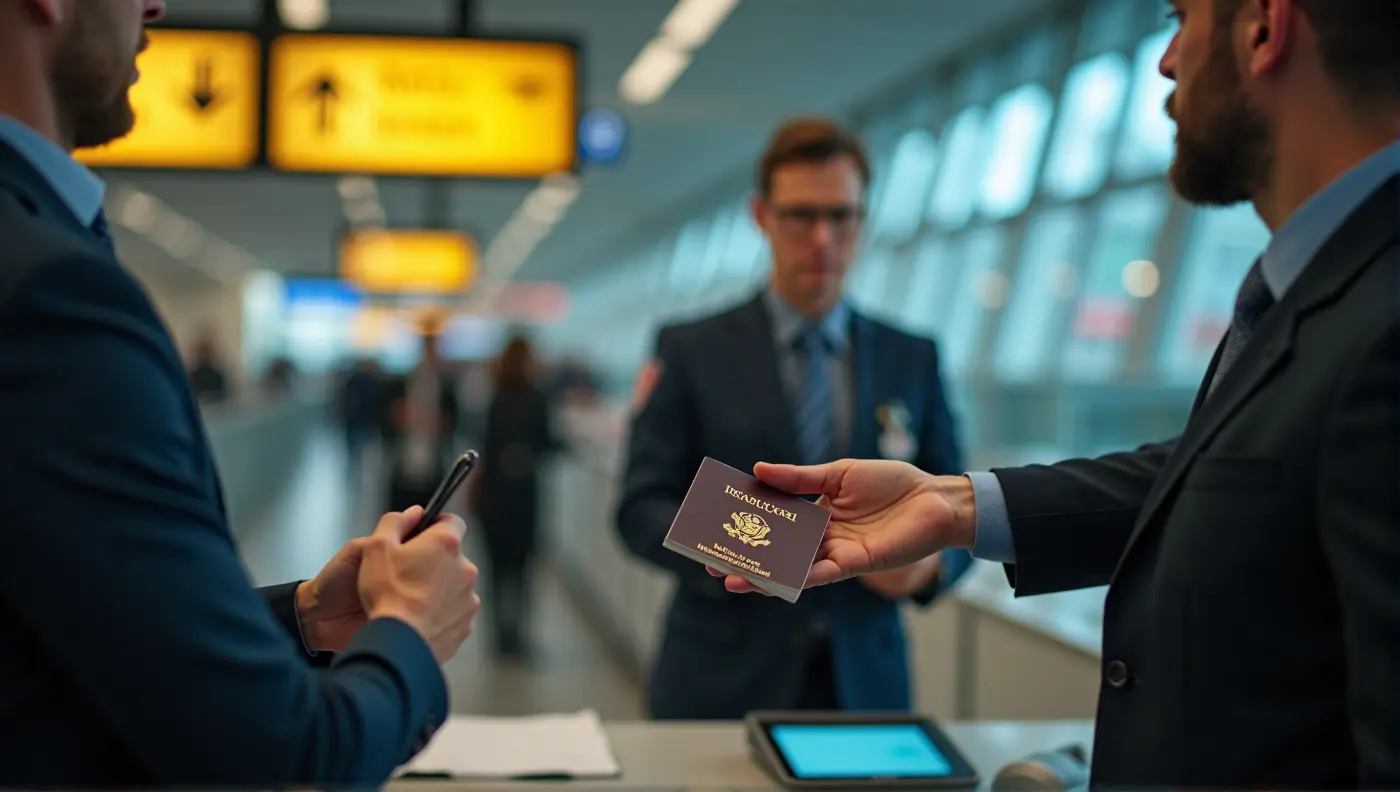Planning an adventure to the vibrant landscapes and bustling cities of Vietnam is exciting. It’s a country rich in culture, history, and natural beauty. However, before you can immerse yourself in pho stalls or cruise Ha Long Bay, sorting out your entry permissions is a crucial piece of Vietnam trip preparation. Understanding the travel visa vietnam process is essential.
Navigating international entry requirements can seem complex, but EssentialVietnamTravel.com is here to simplify it. This guide provides clear, step-by-step instructions on Vietnam visa requirements for tourism purposes, ensuring you have the correct travel authorization process information for 2025. We’ll cover eligibility, application methods, necessary documents, costs, and what to expect upon arrival. Let’s ensure your travel to vietnam starts smoothly.
Understanding Your Vietnam Tourist Visa Requirements for Entry

The first step in your planning is determining if you, as a Tourist, actually need a visa for vietnam travel. Vietnam tourism regulations vary significantly based on your nationality and the intended duration of your stay. Not everyone requires a pre-arranged visa.
Many nationalities benefit from visa-free entry for short tourist stays. These Vietnam visa exemption agreements allow citizens of specific countries to enter Vietnam for tourism for a set period (often 15, 30, or even 45 days) without needing any prior visa application. The list of eligible countries changes periodically.
Therefore, EssentialVietnamTravel.com strongly advises you to check travel visa vietnam requirements specific to your passport directly with the official website of the Vietnamese embassy or consulate in your country before making any travel plans. This is the most reliable source for eligibility check, required information.
If your nationality is not on the visa exemption list, or if you plan to stay longer than the visa-free period allows, you will need a valid vietnam tourist visa or another form of permission to travel vietnam. This visitor permit vietnam is specifically for tourism purposes.
It is distinct from other types like a Work permit Vietnam or options related to Permanent residency Vietnam, which have entirely different application processes and requirements handled typically through an embassy. This guide focuses solely on visas for tourism. Misrepresenting your travel purpose can lead to an entry ban or other serious consequences.
A critical requirement for all travelers entering Vietnam, whether visa-free or with a visa, is passport validity. Your passport must be valid for at least six months beyond your intended date of departure from Vietnam. Ensure your passport validity period meets this rule well before you travel to vietnam. An applicant’s passport is not damaged and has sufficient blank pages for stamps.
Meeting basic health requirements and having sufficient funds for travel are also underlying assumptions and premises for entry, although proof is not always actively checked for standard tourists.
The standard vietnam holiday visa typically grants a specific duration of stay allowed. Depending on the visa type you obtain (like the E-visa), you might get single entry or multiple entry permission within the visa’s validity period. Understand these validity and conditions of use before you apply. Remember, the goal is securing the correct vietnam entry authorization for your planned trip.
Applying Online: The Vietnam E-visa Process via the Government Portal

For many nationalities planning tourist visits, the Vietnam E-visa (vietnam tourist e-visa) is the most convenient and popular application method. This official online system allows eligible travelers to apply travel visa vietnam online for tourist directly through the government, simplifying the vietnam visa application process considerably. It eliminates the need to visit an embassy or rely on third-party agents for a standard tourist stay.
The E-visa (E-visa (EV) Category) currently offers up to a 90-day tourist visa Vietnam stay duration and allows for multiple entry (Multiple entry travel visa vietnam validity). This provides significant flexibility for travelers exploring Vietnam or potentially visiting neighbouring countries within their visa validity period.
The only place to apply for the official E-visa is the Official government portal for e-visa application, managed by the Vietnamese Immigration Department. Be wary of unofficial websites that may look similar but charge extra fees or provide incorrect services. Access the correct Vietnam Government Portal directly.
Here’s a step-by-step guide to the online application:
- Access the Official Portal: Navigate to the correct Vietnamese Immigration Department E-visa website. Ensure the URL is the official government domain.
- Upload Required Documents: You will need digital copies of:
- Your Passport Data Page: A clear scan or photo of the main page showing your photo and details (Tourist Visa Application, Required Document, Passport copy). Ensure all information is legible.
- Your Portrait Photo: A recent passport-style photo meeting specific requirements (usually white background, no glasses, specific dimensions – check the portal for exact rules) (Tourist Visa Application, Required Document, Photo).
- Fill in the Application Form: Complete the online form accurately with your personal details (matching your passport exactly), travel information (intended arrival date, entry/exit points), and contact details. Double-check all information before submitting.
- Select Entry/Exit Points: Choose your intended ports of entry and exit from the provided list of Designated entry/exit points for e-visa holders. These include major international airports like Da Nang International Airport, Hanoi (Noi Bai), Ho Chi Minh City (Tan Son Nhat), as well as specific land crossings and seaports. You must enter and exit through these designated points.
- Pay the E-visa Fee: Proceed to pay the non-refundable application fee online using a valid international credit or debit card. The current Vietnam E-visa Fee Amount is typically 25 USD for a single entry and 50 USD for multiple entries (Vietnam E-visa Fee, Amount, 25 USD single entry). Confirm the exact fee on the official portal as it can change. Correct fee payment enables processing.
- Receive Registration Code: After successful payment, you will receive a unique registration code. Keep this code safe as you will need it to check your application status.
- Check Status and Download: The typical processing timeframe expectations for an E-visa is 3 to 5 working days, although it can sometimes take longer. Use your registration code on the official portal to check the status. Once approved, download and print the E-visa PDF document.
It is crucial to carry a printed copy of your E-visa along with your passport when you travel. Present both to the Immigration service upon arrival. Ensure you determine eligibility for travel visa vietnam via the E-visa route by checking the official portal’s list of eligible nationalities. This list of specific eligible nationalities for e-visa is clearly provided on the government site.
Considering Visa on Arrival? Requirements and Steps for Tourism
Another method some travelers consider is the Vietnam visa on arrival for tourism (VOA). However, it’s essential to understand that this is not a visa you simply get automatically when you land. It requires significant pre-planning and is generally less straightforward than the E-visa for most eligible tourists in 2025.
The absolute Requirement for pre-approved letter for VOA is the key difference. You must obtain a valid Approval Letter before you depart for Vietnam. This letter is issued by the Vietnamese Immigration Department but typically arranged through authorized private agencies in Vietnam online. You cannot get a VOA without this pre-approved letter.
Here’s how the VOA process generally works:
- Apply for the Approval Letter Online: Find a reputable online agency that processes VOA approval letters. There are many, so choose carefully. You will provide your passport details, travel dates, and intended airport of arrival.
- Pay Agency Service Fee: You will pay a service fee to the agency for processing your letter request. This fee is separate from the visa stamping fee you pay upon arrival.
- Receive Approval Letter: The agency will email you the Approval Letter, usually within 1-2 working days. This letter lists your name (and possibly others applying at the same time). Print this letter – airlines will check it before allowing you to board your flight to Vietnam.
- Prepare for Arrival: Gather the necessary items:
- Your printed Approval Letter.
- Your original passport (valid for 6+ months).
- Two recent passport-sized photos (meeting Vietnamese requirements).
- Cash (usually US Dollars, sometimes Vietnamese Dong) for the visa stamping fee. The exact amount depends on single/multiple entry and duration – confirm the current fee beforehand. Credit cards are typically not accepted at the VOA counter.
- Arrive at a Designated Airport: VOA is only available at specific international airports in Vietnam, such as Hanoi (HAN), Ho Chi Minh City (SGN), Da Nang (DAD), Nha Trang (CXR), and Phu Quoc (PQC). It is not available at land borders.
- Proceed to VOA Counter: Upon arrival, look for the “Visa on Arrival” or “Landing Visa” counter before you go to the main immigration line.
- Submit Documents & Pay Stamping Fee: Submit your passport, printed Approval Letter, completed entry/exit form (usually provided there), and photos to the officer. Pay the visa stamping fee in cash.
- Wait for Visa Sticker: The officer will process your application and affix the Passport visa sticker into your passport. This distinct visa sticker design confirms your visa details. Waiting times at the VOA counter can vary significantly depending on flight arrivals.
- Proceed to Immigration: With the visa sticker in your passport, you can now go to the regular immigration counter for the entry procedure and Airport arrival stamp.
While VOA was once very popular, the introduction and expansion of the convenient 90-day multiple-entry E-visa has made VOA less appealing for many tourists who are eligible for the E-visa. Consider the potential queues at the VOA counter and the need to arrange the approval letter beforehand. The E-visa allows you to have everything sorted before you fly.
Embassy Applications: When to Contact a Visa Issuing Office

The most traditional way to obtain a travel visa vietnam is by applying directly through a Vietnamese embassy or consulate in your home country or country of residence. This Embassy Visa method is often necessary for:
- Nationalities Not Eligible for E-visa: If your country is not on the list of specific eligible nationalities for e-visa, the embassy route is likely your primary option for a tourist visa.
- Visa Types Other Than Standard Tourism: If you plan to travel to vietnam for purposes other than tourism (e.g., business, study, visiting relatives, specific volunteer programs, or potentially ), you will almost certainly need to apply via an embassy. The E-visa and VOA are generally limited to tourism.
- Longer Stays (Potentially): While the E-visa now offers up to 90 days, if you require an even longer stay for specific reasons approved beforehand, the embassy might be the required channel. Note that visa extension possibility, status, limited for tourist visa is generally true; extending tourist visas while in Vietnam can be difficult or restricted.
- Peace of Mind: Some travelers simply prefer having the visa sticker secured in their passport before they leave home.
The process for applying at an embassy varies depending on the specific vietnam embassy location. However, the general steps usually involve:
- Check the Embassy Website: Visit the official website of the Vietnamese embassy or consulate responsible for your jurisdiction. This is the most reliable Vietnam Visa Requirements, Source, Official embassy website. Find the visa application section.
- Download Application Form: Obtain the correct visa application form.
- Gather Required Documents: The embassy website will list the specific Mandatory documentation. This typically includes:
- Completed application form.
- Original passport (valid 6+ months).
- Passport-sized photos.
- Visa fee (payment method varies by embassy).
- Potentially supporting documents like a copy of your flight itinerary or accommodation booking proof.
- Submit Application: Submit your application package either in person or by mail, according to the embassy’s instructions.
- Pay Visa Fee: Pay the required fee. Travel Visa Cost, Factor, Nationality and required Number of entries permitted often influence the fee.
- Wait for Processing: The Embassy Visa, Processing Time, Varies by location significantly. It can take anywhere from a few days to several weeks. Check the embassy website for estimated timelines.
- Receive Passport with Visa: Once approved, you will receive your passport back with the visa sticker affixed.
Always contact the specific Visa Issuing Office (embassy or consulate) directly if you have questions about their specific procedures, fees, or required documents, especially for non-tourist visa types or complex situations like a Group visa application procedure.
Got Your Visa Sorted? Find Your Flights!
With the visa process clear, it’s time to find the best flight deals for your Vietnam adventure.
Essential Documents: What the Applicant Traveler Needs for Vietnam Visa Application

Regardless of the application method (E-visa, VOA pre-approval letter, or Embassy), gathering the correct documents required for travel visa vietnam is crucial for a successful vietnam visa application. Missing or incorrect paperwork is a common reason for delays or rejections. As the Applicant traveler, you are responsible for ensuring everything is in order.
Here is a Required documents checklist covering the most common items:
- Valid Passport: This is non-negotiable. Your passport must be valid for at least 6 months beyond your intended departure date from Vietnam. It must also have sufficient blank pages for visa stickers and entry/exit stamps. Ensure your applicant’s passport is not damaged. Remember, a valid passport precedes visa application.
- Passport Photo(s): Most applications require recent passport-sized photos.
- E-visa: A digital portrait photo meeting specific requirements (size, background, no glasses). Check the portal for details.
- VOA: Typically requires two printed passport photos (e.g., 4×6 cm, white background) to submit upon arrival.
- Embassy: Requirements vary; check the specific embassy website. Usually printed photos are needed.
- Passport Data Page Copy/Scan:
- E-visa: A clear digital scan or photo of your passport’s main information page.
- Embassy: Often requires a physical photocopy.
- Completed Application Form:
- E-visa: Filled out online directly on the Vietnam Government Portal.
- VOA: An entry/exit form usually filled out upon arrival (sometimes downloadable beforehand).
- Embassy: A specific application form provided by the embassy, completed accurately.
- Visa Fee Payment: Proof of payment or the required fee amount itself.
- E-visa: Paid online during application.
- VOA: Stamping fee paid in cash (usually USD) upon arrival.
- Embassy: Paid according to the embassy’s instructions.
- Approval Letter (for VOA ONLY): The printed, pre-approved letter obtained online before traveling.
Potentially Required (Especially for Embassy applications or longer stays):
- Proof of Onward Travel: Sometimes a copy of your confirmed flight itinerary showing your entry and exit dates might be requested.
- Proof of Accommodation: Less common for standard tourist visas, but occasionally accommodation booking proof might be asked for.
- Travel Insurance: While highly recommended for all travelers, proof of travel insurance is occasionally requested by some embassies, especially for longer visa durations.
Always double-check the specific Mandatory documentation list provided by the official source for your chosen application method (official E-visa portal or specific embassy website). Having all documents ready ensures the application required before visa issuance proceeds smoothly.
Visa Fees and Timelines: What to Expect for Vietnam Entry Authorization

Budgeting and scheduling are key parts of Vietnam trip preparation. Understanding the potential travel visa vietnam cost and the processing timeframe expectations helps you plan effectively. These factors can vary based on your nationality, the visa type, the number of entries, and the application method.
Visa Fees:
- E-visa: Generally the most straightforward. As of 2025, the Vietnam E-visa Fee Amount is typically 25 USD for a single-entry visa and 50 USD for a multiple-entry visa, both valid for up to 90 days. This fee is paid online during the application and is usually non-refundable. Always verify the current fee on the Official government portal for e-visa application.
- Visa on Arrival (VOA): Involves two fees:
- Approval Letter Service Fee: Paid online to the agency processing your letter. This fee varies between agencies (typically $10-$50 USD depending on processing speed).
- Visa Stamping Fee: Paid in cash (usually USD) upon arrival at the Vietnam airport VOA counter. This fee is set by the government and is similar to the E-visa fee (around $25 for single entry, $50 for multiple entry).
- Embassy Visa: Fees vary significantly depending on the vietnam embassy location and your nationality. Travel Visa Cost, Factor, Nationality plays a role here. Check the specific embassy website for their fee schedule and accepted payment methods. Embassy fees are often higher than E-visa fees.
- Cost differences are notable between methods, with the E-visa often being the most cost-effective overall for eligible travelers.
Processing Timelines:
- E-visa: Usually the fastest official method for pre-approved visas. The standard processing timeframe expectations are 3 to 5 business days. However, apply at least 1-2 weeks before your trip to account for potential delays or weekends/holidays. Understand travel visa vietnam processing time is key.
- Visa on Arrival (Approval Letter): The letter itself is usually processed quickly by agencies, often within 1-2 business days (sometimes faster with expedited services for an extra fee). The time spent at the airport VOA counter upon arrival can vary greatly (from 15 minutes to over an hour) depending on queues.
- Embassy Visa: This method typically takes the longest. Embassy Visa, Processing Time, Varies by location and can range from 5 business days to 2-3 weeks or even longer, depending on the embassy and application volume. Factor this in when deciding how long does travel visa vietnam take via this route.
General Advice:
- Apply Early: Regardless of the method, don’t leave your visa application to the last minute. Apply well in advance of your intended travel date.
- Check Official Sources: Fees and processing times can change. Always consult the official E-visa portal or the relevant embassy website for the most current information before you apply for travel visa vietnam.
- Factor in Weekends/Holidays: Processing times are usually quoted in business days. Vietnamese public holidays can also cause delays.
Understanding these costs and timelines allows you to manage your Vietnam travel budget and schedule your Vietnam visa application appropriately, ensuring you receive your vietnam entry authorization before your trip.
Arrival in Vietnam: Navigating Passport Control as a Tourist

You’ve successfully obtained your travel visa vietnam (or confirmed your visa-free entry eligibility) and your flight has landed at a Designated Vietnamese Airport like Noi Bai (Hanoi), Tan Son Nhat (Ho Chi Minh City), or Da Nang International Airport. The final step before starting your adventure is clearing immigration. Here’s what the Tourist can generally expect during the arrival stamp process.
- Deplane and Follow Signs: After getting off the Airline, follow the signs for “Arrivals” and “Immigration” or “Passport control”. Airports are usually well-signed in both Vietnamese and English.
- Visa on Arrival Counter (If Applicable): If you used the VOA method, your first stop before the main immigration lines is the dedicated “Visa on Arrival” or “Landing Visa” counter. Submit your passport, printed Approval Letter, completed entry/exit form, passport photos, and pay the stamping fee in cash as described previously. Wait for the visa sticker to be placed in your passport.
- Proceed to Immigration Counters: If you have an E-visa (printed copy ready) or are entering visa-free, proceed directly to the main immigration counters. There might be separate lines for Vietnamese citizens, ASEAN passport holders, and other foreigners – choose the correct line.
- Present Documents: When it’s your turn, approach the counter and present your passport and your printed E-visa (if applicable) to the Border Control Officer / Immigration service staff. If entering visa-free, just present your passport. They may also ask to see your boarding pass stub (Boarding pass icon reminder).
- Biometrics (Potentially): Depending on the airport and current procedures, you might be asked to look into a camera for a photo or provide fingerprint scans.
- Entry Stamp: The officer will check your documents and visa validity. If everything is in order, they will stamp your passport with the Airport arrival stamp. This stamp indicates your date of entry and, crucially, the date by which you must exit Vietnam (reflecting your duration of stay allowed based on your visa or visa exemption). Visa validity dictates authorized stay duration. Double-check this date before leaving the counter.
- Baggage Claim & Customs: After clearing immigration, proceed to the baggage claim area to collect your checked luggage (check your Luggage tag). Finally, pass through customs (usually a simple walk-through unless you have goods to declare).
Tips for a Smooth Arrival:
- Have Documents Ready: Keep your passport, printed E-visa/VOA letter, and boarding pass easily accessible.
- Be Patient: Especially during peak hours, immigration lines can be long.
- Be Polite: Interact respectfully with the immigration officers.
- Check Your Stamp: Ensure the exit date stamped in your passport is correct before leaving the immigration area.
Successfully navigating passport control marks the official start of your journey exploring the wonders of Vietnam. With your visa sorted and entry stamp secured, you’re ready to collect your bags and begin your essential adventure! Remember to always abide by Vietnamese laws during your stay.
Read More: Helpful Visa Guides
Disclaimer: This information is provided for general guidance only based on typical procedures as of 2025. Visa requirements, fees, and processes can change without notice. EssentialVietnamTravel.com strongly recommends verifying all information directly with official sources, such as the relevant Vietnamese embassy/consulate in your country or the official Vietnam Immigration e-visa portal, before making any travel plans or payments.



